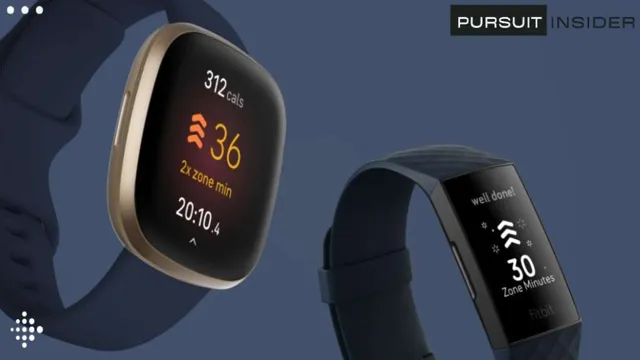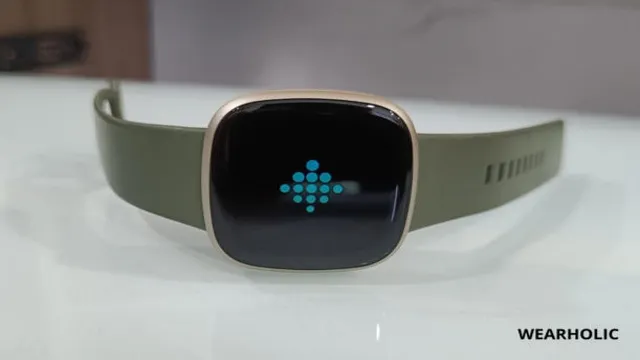If you’re thinking about investing in a Fitbit, you may be wondering how long it will last. After all, you don’t want to spend your hard-earned money on a device that won’t go the distance. The good news is that Fitbits are built to last.
But just how long can you expect them to hold up? In this blog, we’ll dive into the world of Fitbit durability and explore the factors that can impact its lifespan. So, whether you’re a seasoned Fitbit user or just considering one for the first time, read on to discover the answer to the question: How long does a Fitbit last?
Introduction: Exploring Fitbit’s Lifespan
People who invest in fitness tracking devices like Fitbit can’t help but wonder how long these gadgets can stay in shape and track their activities. While it would be nice to have a one-size-fits-all answer, there are several factors that can influence the lifespan of a Fitbit. First off, the amount of usage the device gets matters.
If you wear your tracker every day and night, it will lose its charge faster than if you don’t wear it as frequently. Second, the care you give to your device can mean the difference between a functioning tracker and one that’s broken. Fitbits are relatively delicate, so if you don’t handle them gently, they are more liable to experience damage or malfunctions.
Lastly, technological advancements could be a determining factor in how long you keep your Fitbit. As technology evolves, people’s expectations for their devices go up, making technologically outdated Fitbits less desirable. All things being equal, a Fitbit can last anywhere from 2-5 years.
Consistent care and attention, as well as any available software and firmware updates, could prolong the device’s lifespan.
Overview of Fitbit’s durability
Fitbit’s durability.Fitbit is a well-known brand in the fitness industry, but how durable are their fitness devices? Fitbit’s engineers have designed their products to withstand the wear and tear of everyday use while continuously monitoring your fitness goals. Fitbit uses high-quality materials to ensure the strogest protection of their devices against scratches and falls.
In addition, their products are water-resistant and can handle a bit of sweat, rain, and accidental splashes without damage. Their products undergo several stress tests to make sure they can withstand intense workouts and general abuse. The Fitbit also comes with a warranty for accidental damage, further proving their confidence in their product’s durability.
Therefore, when it comes to Fitbit’s durability, you can rest assured that their products will keep pace with your daily activities without any issues, and the brand stands behind the robustness of the devices it sells.

Factors that affect Fitbit’s lifespan
Fitbit’s lifespan is affected by various factors that can impact its performance and overall durability. One of the most significant factors is usage intensity, meaning how often and for how long the device is used. The more often it’s used, the quicker the battery life and overall lifespan will decrease.
Similarly, exposure to water or extreme temperatures can damage the device’s components, shortening its lifespan. Additionally, rough handling can also lead to quicker wear and tear, reducing the device’s longevity. However, regular maintenance and careful usage can help prolong the Fitbit’s lifespan.
It’s also important to ensure that the device is updated regularly, as software updates can improve the device’s performance and fix any bugs that may harm its functionality. By taking care of your Fitbit and being mindful of how it’s used, you can help ensure that it lasts for years to come.
Typical Lifespan of a Fitbit
Fitbit is a popular brand that offers some of the most advanced health tracking technology in wearable form. As a result, many users wonder how long these devices last. Generally speaking, the lifespan of a Fitbit is around two to five years.
However, this averages may vary based on several factors, such as usage patterns, maintenance, and battery life. Certain models come with replaceable battery components that can extend their lifespan significantly, while others may require recharging frequently. It is important to keep your Fitbit well-maintained and to follow the manufacturer’s guidelines to ensure maximum use experience.
Regular cleaning, syncing, and updating can help prolong the lifespan of your Fitbit. While the device may undergo wear and tear over time, its durability and longevity make it a worthwhile investment for anyone looking for an easy way to track their fitness progress.
Fitbit’s advertised lifespan
Fitbit’s advertised lifespan is around five years, but this can vary depending on usage and care. Many people are curious about the typical lifespan of a Fitbit, and it can be difficult to provide a definite answer. Some users may find that their device lasts for only a year or two, while others may have a Fitbit that remains functional for several years.
Factors such as the frequency and intensity of use, exposure to water and sweat, and the quality of care can all impact the lifespan of a Fitbit. Additionally, some models may be more durable than others, such as those with a more robust design and stronger materials. It’s important to remember that a Fitbit is a piece of technology and, like any device, will have a limited lifespan.
However, by taking proper care of your Fitbit, such as regularly cleaning it and avoiding exposing it to extreme temperatures, you can help extend its lifespan.
Average lifespan based on consumer reviews
FitbitFitbit is a popular activity tracker that has been around for more than a decade. This wearable device is known for its ability to track various aspects of fitness, including steps taken, calories burned, and sleep patterns. But how long can you expect your Fitbit to last? Based on consumer reviews, the typical lifespan of a Fitbit is around two years.
Of course, this can vary depending on how often you use it and how well you take care of it. Several factors can contribute to a shorter lifespan, such as battery issues, water damage, or general wear and tear. However, some people have reported that their Fitbit lasted for much longer than two years.
Ultimately, how long your Fitbit lasts will depend on several factors, so it’s essential to take care of it and be mindful of how often you use it. If you’re looking to invest in an activity tracker, a Fitbit is an excellent choice, as it can help you stay motivated to reach your fitness goals.
Longevity comparison with other fitness trackers
Fitbit has become one of the most popular brands in the fitness tracking industry, and many people wonder just how long these devices typically last. On average, a Fitbit can last anywhere from 2 to 5 years depending on the model and how well it is maintained. Of course, some factors can influence longevity, such as how often it is charged and synced with other devices.
With regular use, it is possible for the battery life to start to dwindle or for the display to become less clear. However, Fitbit offers excellent support and software updates to continue using your device longer. Overall, Fitbit is known for its durability and long lifespan compared to other fitness trackers.
Maximizing the Lifespan of Your Fitbit
Fitbit is a useful device that can help you track your daily activities, monitor your heart rate, and manage your fitness goals. However, like any other piece of technology, your Fitbit has a limited lifespan. The actual lifespan of your Fitbit depends on several factors such as the model you own, how often you use it, and how well you maintain it.
On average, a Fitbit can last between two to five years. To ensure that your Fitbit lasts as long as possible, you need to take good care of it. This includes keeping it clean, ensuring it is properly charged, and avoiding exposure to extreme temperatures.
You can also extend the life of your Fitbit by regularly updating its firmware and avoiding dropping it or subjecting it to impact. By taking these steps, you can maximize the lifespan of your Fitbit and ensure that it provides accurate and reliable data for years to come.
Maintenance tips for prolonging Fitbit’s lifespan
If you’re a proud owner of a Fitbit, you know just how valuable it is to keep fit and healthy. To maximize your investment, it’s important to take care of your device so that it lasts longer and performs at its optimal level. One of the best ways to do this is by ensuring that you charge your Fitbit regularly, ideally every 2 to 3 days.
Overcharging your Fitbit can damage its battery, which can shorten its lifespan. Another great way to keep your Fitbit running for longer is by cleaning it regularly. Sweat, dirt, and oil from your skin can accumulate on the device and cause it to malfunction.
Wiping down your Fitbit with a slightly damp cloth can remove the grime and prevent any issues. Finally, it’s important to wear your Fitbit correctly. That means ensuring that the band is the right size for your wrist, not wearing it too tightly, and avoiding any sudden movements that could damage the device.
By following these simple tips, you can keep your Fitbit going strong for years to come!
Common causes of Fitbit damage to avoid
Fitbit damageIf you’re a Fitbit enthusiast, you know how important it is to take good care of your device to ensure it lasts as long as possible. There are many things that can cause damage to your Fitbit, such as water, high and low temperatures, scratches, and impact from drops. It’s essential to avoid exposing your device to these conditions to ensure maximum longevity.
One effective way to protect your Fitbit is to invest in a protective case or cover for it. You can also take preventative measures by removing it from your wrist when engaging in activities that may cause damage. Regularly cleaning your Fitbit can also help to prevent scratches and other forms of damage.
By taking these simple steps, you can ensure that you get the most out of your Fitbit and enjoy it for years to come without needing to replace it due to damage.
Conclusion: Is a Fitbit Worth the Investment?
In the world of technology, the lifespan of a device can vary greatly. However, when it comes to Fitbits, it’s safe to say that they last as long as your commitment to your fitness goals. So, whether it’s a few months or a few years, your Fitbit will stay by your side, tracking every step, heartbeat, and calorie burned, until you reach your peak fitness level.
Another way of putting it? A Fitbit lasts as long as your determination lasts!”
FAQs
What is the average lifespan of a Fitbit?
The average lifespan of a Fitbit is around 2-3 years.
Can a Fitbit battery be replaced?
Yes, most Fitbit models have replaceable batteries, but some newer models do not.
How can I extend the life of my Fitbit?
To extend the life of your Fitbit, you should charge it regularly, avoid exposing it to extreme temperatures, and take care not to damage it during use.
Why is my Fitbit not holding a charge for very long?
If your Fitbit is not holding a charge for very long, it may be time to replace the battery. Other factors that could be causing this issue include a damaged charging cable or a faulty charging port.
Can I wear my Fitbit while swimming or showering?
Some Fitbit models are water-resistant, but not all. You should check the specifications for your specific model to see if it is safe to wear while swimming or showering.
